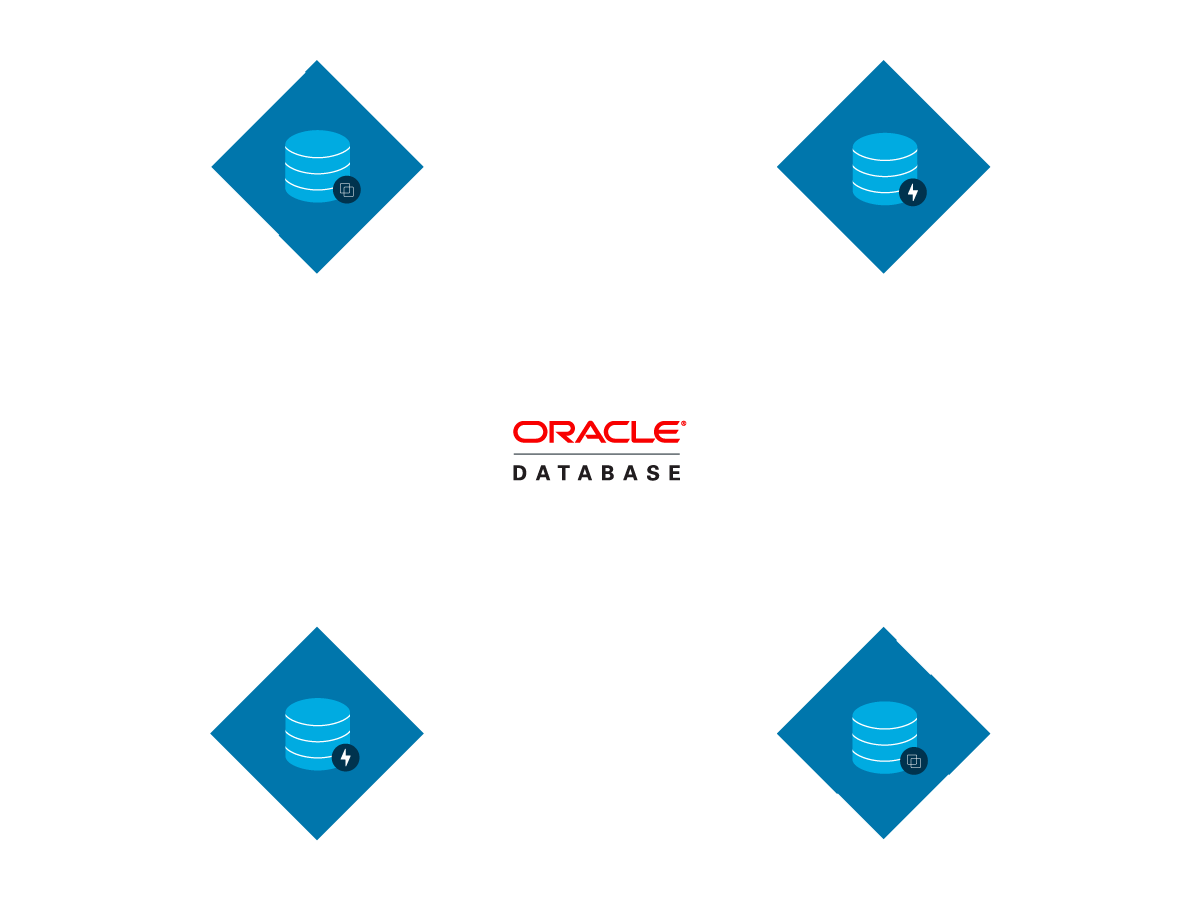Oracle has long provided a high-performance, scalable database solution and many organizations have standardized on Oracle to run mission-critical applications. It is imperative that database stakeholders—especially database administrators (DBA)—make sure Oracle databases are highly available and that data is protected against media corruption, user-induced errors, and noncompliance.
General Oracle Backup Principals
With an Oracle relational database management system (RDBMS), there are two principal backup strategies: Recovery Manager (RMAN) and user-managed.
RMAN is integrated into Oracle databases and can perform a variety of backup-related activities. RMAN can be accessed using either the Oracle Enterprise Manager or the command line.
User-managed backups can be performed using a combination of host operating system commands and SQL*Plus recovery commands. Backup-related attributes must be defined manually in this case for every backup.
RMAN is the most-commonly used option of these two and the majority of Oracle backup capabilities focus on that process. An advantage of an RMAN backup is its ability to create backups while databases are open and/or mounted.
Another option available with RMAN is the ability to create incremental backups. Incremental backups copy only specific files that were changed since the last backup was performed.
Oracle Database Backup Challenges
Although Oracle RMAN is built into the Oracle database, managing a large number of databases using RMAN by itself can be challenging. DBAs face four key challenges with RMAN implementations:
Maintaining and managing existing backups—DBAs may be comfortable building custom scripts, but the problem lies in maintaining and managing those across multiple databases, adapting to changes in topology, and ensuring compliance needs of the business.
Balancing database performance and protection—Backup tasks can affect the performance of the database server, easily consuming one CPU core per RMAN channel. If full backups are run regularly, then multiple channels might be needed for high-speed backups, forcing the DBA to choose between backup performance and database performance.
Serving the needs of secondary users—Oracle DBAs typically contend with a steady stream of requests from secondary users seeking access to copies of production data for use cases such as testing, development, and ETL (extract, transform, load) workflows. DBAs must juggle managing the needs of different departments with protecting mission critical databases serving the business.
The organizational separation between DBAs and backup administrators—While a DBA may be open to delegating backup tasks to the backup administrator, the responsibility still falls on the DBA to build and maintain RMAN scripts as the database environment changes. There is a real risk of human error when multiple stakeholders are involved.
Rubrik’s Oracle database backup and recovery framework provides key capabilities that are designed to eliminate these challenges..
Rubrik Automated Oracle Database Backup
The following summaries outline the features that provide a foundation for Rubrik’s Oracle database backup and recovery solution:
Automated Oracle data protection—Rubrik’s Oracle Data Protection fully automates Oracle RMAN workflows after the Rubrik Backup Service (RBS) is installed on an Oracle host. All databases on an Oracle host are automatically discovered and displayed in Rubrik’s web console. Customers can select the desired level of the object (Oracle Real Application Cluster, Oracle Host, or a specific Oracle database) and assign a business SLA. The necessary RMAN scripts are generated during run time as per SLAs thereby simplifying database backup operations.
True incremental “forever” backups—Oracle’s Incremental Merge feature coupled with Rubrik’s revolutionary BLOB engine delivers true incremental forever backups at scale for Oracle databases. If available, Rubrik will also take advantage of Oracle block change tracking (BCT) during backups so that it no longer must scan the entire database for incremental changes. Thus, after the first backup, the DBA need not worry about long backup windows negatively affecting database performance.
Rubrik Live Mount—Live Mount for Oracle databases delivers near-zero RTOs with instant recovery and live migration. In addition, DBAs can provide instant clones to developers, accelerating application development, testing, and ETL (extract, transform, and load) workflows without any impact to production environments.
Key Live Mount capability specific to Oracle implementations: Once the database is mounted on the Rubrik cluster, Rubrik Live Mount automates the mounting of the database within the Oracle system making it immediately available to a DBA or end user.
Learn how you can simplify and optimize Oracle database backup and recovery on-premises or in the cloud with Rubrik’s automated solutions.


